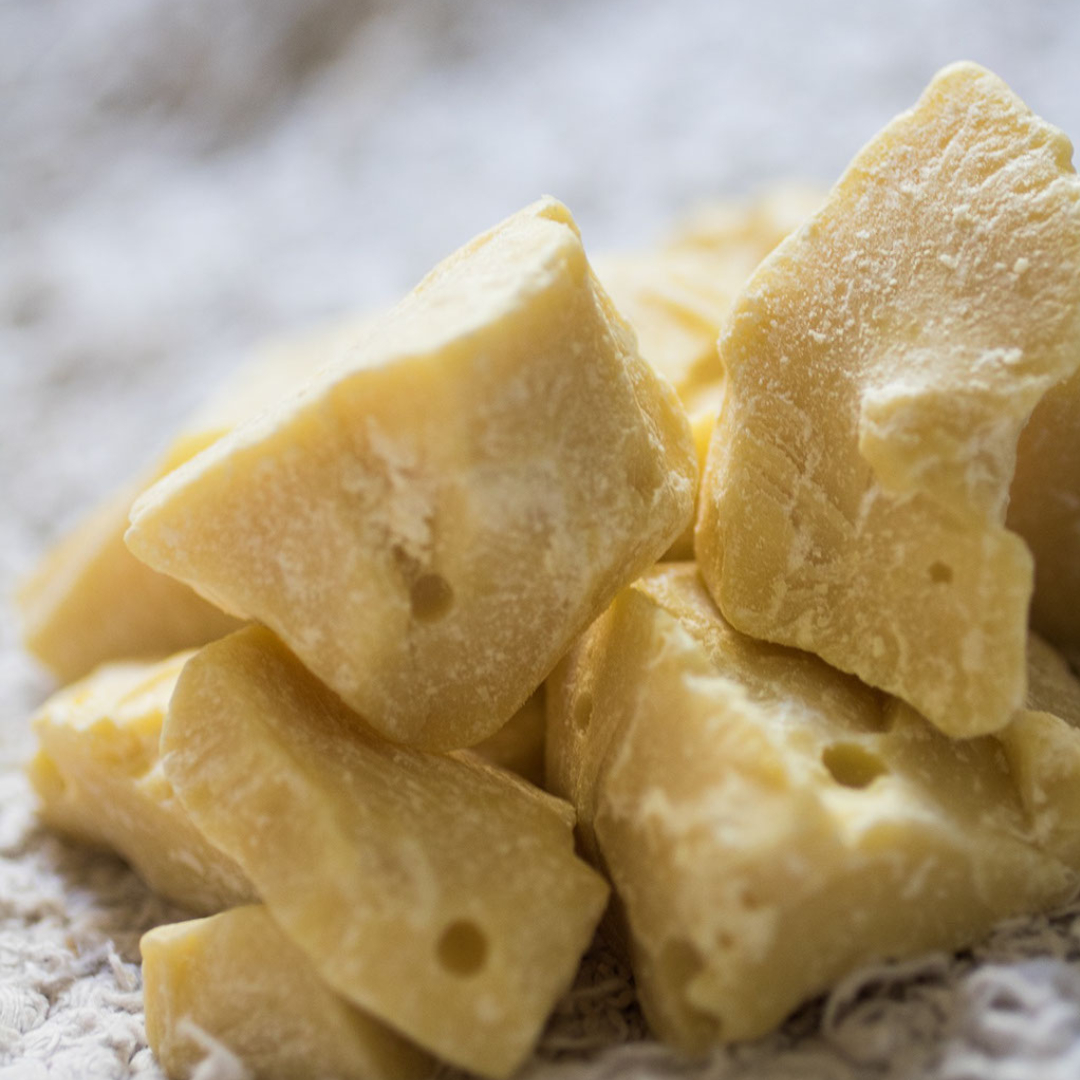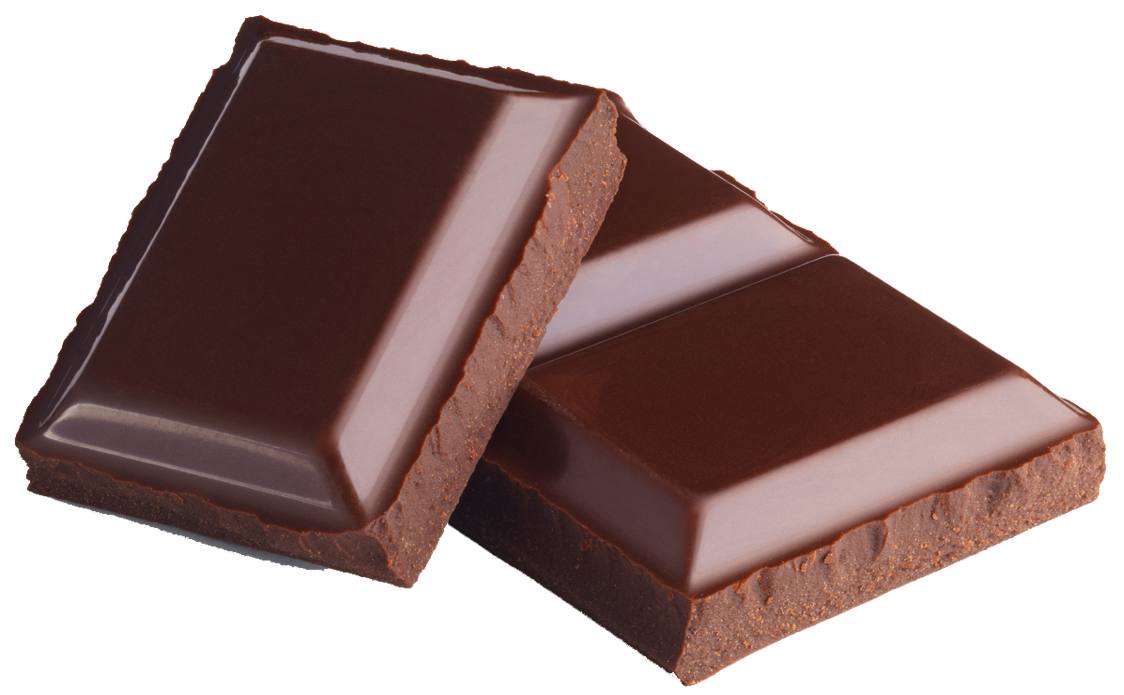 Cocoa butter is the most expensive ingredient used in the production of chocolate sharing major uses in confectionery and cosmetic industries.
Cocoa butter is the most expensive ingredient used in the production of chocolate sharing major uses in confectionery and cosmetic industries.
Cocoa beans come from the cacao (theobroma cacao) tree and are used in the production of cocoa butter and cocoa mass to be made into chocolate.
After fermenting, drying, roasting and winnowing cocoa beans, we are left with what’s called ‘cocoa nibs’.
The nibs are ground into a paste (cocoa liquor), which is pressed to release the fats. This process can be performed at home using a small nut butter press.
Function:
Cocoa butter is predominantly a combination of triacylglycerols of palmitic, stearic and oleic acids.
These compounds allow it to be solid at room temperature and melt in a narrow temperature range of 32°C to 35°C. After being separated from the solids, we have a yellow fat ‘cocoa butter’. Many companies then refine and deodorise it to remove the strong characteristic odours giving them a blank canvass to work with. The low melting point of cocoa butter (25° C - 36° C) allows it to melt in the mouth and on the skin at (36°C), which is why it’s widely used in the cosmetic industry.
Cocoa butter characteristics in chocolate:
- Viscosity control
- Emulsification
- Appearance – glossiness
- Snap
- Heat stability
- Mouthfeel
- Flavour release
- Shelf life
Cocoa butter’s ‘superpower’ lies within the speed in which it melts as it becomes liquid just above 30° C.
There are 21 different fats present in cocoa butter. Three of those fats make up nearly half of its weight and they all melt at around the same temperature, depending if tempered or not.
Fat profile of cocoa butter:
- Triacylglycerols: 95%
- Diacylglycerols: 2%
- Monoacylglycerols: <1%
- Polar lipids: 1%
- Free fatty acids: 1
- High viscosity is a good thing for anyone wanting a rich, velvety-smooth, melt-in-the-mouth feel. Anytime cocoa butter is mixed with flavour compounds namely, chocolate solids, those compounds linger and remain on the palate longer.
What does cocoa butter taste of?
If un-deodorised, cocoa butter has a sweet flavour and subtle chocolate aroma. The aroma is stronger than the taste. It is never eaten on its own and only used as an ingredient in recipe formulations.
Skincare:
Cocoa butter is used in ointments, toiletries, and many pharmaceuticals. It’s ideal for beauty-care products since it stays solid at room temperature. It also contains naturally occurring antioxidants that prevent rancidity, giving it a prolonged shelf life (up to 5 years). Cocoa butter feels velvety smooth on the skin, making it perfect for salves, lotions, lip balms, and colour makeup.
Cocoa butter contains high proportions of saturated fats as well as monounsaturated oleic acid, which typically occur in each triglyceride. The velvety texture, pleasant fragrance and emollient properties of cocoa butter make it a popular ingredient in skin care products such as soaps, lotions, toiletries, massage oils, balms and hair care preparations
Application:
Cocoa butter is used for thinning chocolate and making chocolate coatings. It is seldom used in baking applications because it hardens at room temperature, making it less than ideal for creaming methods, unless combined with other fats liquid at room temperature.
Dark chocolate:
- Cocoa butter: ≥ 18%
- Total dry cocoa solids: ≥ 35%
- Dry non-fat cocoa solids: ≥ 14%
Milk chocolate:
- Total dry cocoa solids: >25%
- Dry non-fat cocoa solids: >2.5%
- Dry milk solids: >14%
- Cocoa butter: >20%
Storage:
Cocoa butter has a long shelf life of 2-5 years when stored in airtight, light-proof conditions.
Store away from heat in a cool, dry spot. It can be kept in the refrigerator as well.
